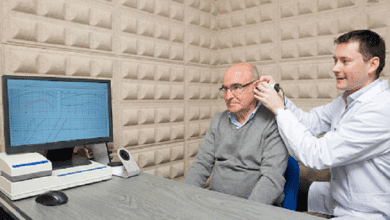Practical Steps for Prevention and Recovery from Brain Injuries

Introduction to Brain Injuries
Brain injuries pose a major public health issue that can deeply impact individuals and their families. They range from mild concussions to severe traumatic brain injuries (TBIs), affecting cognitive function, emotional balance, and physical capabilities. With the World Health Organization estimating millions of brain injuries occurring globally each year, awareness becomes a crucial element in prevention and management.
Common Causes and Types of Brain Injuries
The roots of brain injuries are varied and often linked to external forces or accidents. Some of the most frequent causes include slips and falls, particularly among older adults and young children. Vehicle accidents continue to be a primary cause of TBIs because of the intense forces at play.
Sports activities, mainly contact sports like football or boxing, also contribute significantly to these statistics. Brain injuries can manifest in different forms, such as concussions, which are often temporary, or more severe injuries, like contusions or diffuse axonal injuries. In many instances, legal advice from brain injury attorneys is necessary, primarily when injuries result from negligence or accidents.
Effective Prevention Strategies
Preventing brain injuries requires a multipronged approach, blending awareness with practical measures. Wearing helmets is crucial for individuals engaged in activities like cycling, skateboarding, or horseback riding, as these protective gears significantly reduce the risk of severe injuries. Likewise, ensuring seatbelts are worn while driving or being a passenger in a car can mitigate impact during accidents. In workplaces, adherence to safety protocols and appropriate safety gear are essential to reduce injury risks. Detailed insights from the Centers for Disease Control and Prevention (CDC) provide a comprehensive understanding of the severity and nature of these injuries. Additionally, personal health and fitness can play a supporting role; maintaining good physical fitness can enhance balance and coordination, helping prevent falls. Guidance from the National Safety Council offers extensive strategies for mitigating risk in various scenarios.
Recognizing the Symptoms
Recognizing the signs of a brain injury early can be a critical determinant in effective treatment outcomes. Symptoms can vary widely depending on the injury’s severity. They can include physical signs like nausea, fatigue, and headaches, as well as psychological symptoms such as confusion, mood swings, and behavioral changes. In some cases, symptoms may be delayed, making ongoing vigilance important in the days following a potential head injury. For instance, cognitive impairments like difficulty concentrating or memory lapses may emerge hours or even days after the initial trauma, underscoring the need for careful monitoring post-incident.
Immediate Actions Post-Injury
When a brain injury is suspected, immediate action is crucial. Promptly seeking medical evaluation is essential, even if symptoms appear mild initially. Medical professionals can conduct necessary tests, such as CT scans or MRIs, to assess the extent of the injury. Quick response not only aids in accurate diagnosis but also prevents potential complications by ensuring that appropriate care and monitoring are provided. In addition to medical intervention, ensuring a safe environment where the individual can rest and recover is essential during the initial stages of response.
Essential Steps for Recovery
Physical Therapy
Physical therapy is an integral component of the recovery process for those who have sustained a brain injury. It focuses on regaining mobility, improving balance, and strengthening muscles, which are often affected post-injury. A personalized therapy plan can cater to individual needs, adapting exercises as recovery progresses. This discipline not only aids in physical rehabilitation but also enhances psychological well-being by fostering a sense of achievement and progress.
Cognitive Rehabilitation
Cognitive rehabilitation focuses on improving the mental processes that may be impaired following a brain injury. This therapy includes exercises to enhance memory, attention, and problem-solving skills. Techniques often involve structured tasks that incrementally increase complexity, providing measurable milestones toward recovery. Successful cognitive rehabilitation usually requires collaboration between therapists, patients, and family members to ensure consistency and support throughout recovery.
The Role of Support Systems
A robust support system is invaluable for individuals recovering from brain injuries. Family and friends can provide emotional and practical assistance, helping to navigate the complexities of daily life during recovery. Professional support, including therapists and social workers, can offer structured rehabilitation programs and emotional counseling. Support groups and community resources can also connect individuals with others undergoing similar experiences, fostering a sense of community and shared understanding. Leveraging technology, such as apps for tracking recovery milestones and providing reminders for rehabilitation exercises, can also offer immense benefits.
Resources and Further Reading
Several avenues are available for those seeking additional information and resources about brain injuries. The CDC and the National Safety Council provide comprehensive data and guidelines on preventing and dealing with brain injuries. In addition, numerous books, websites, and articles offer a more detailed exploration of the intricacies of brain injury impacts and recovery strategies. These materials can be essential in achieving a more profound comprehension of the difficulties and remedies related to brain injuries.



